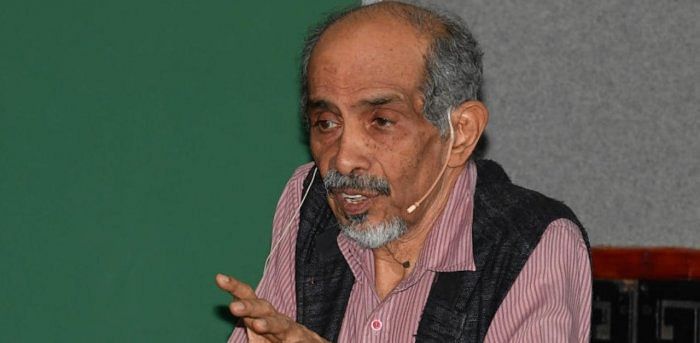
I did not know Professor Roddam Narasimha -- who died in mid-December at age 87 -- at all until I travelled halfway around the earth and suddenly heard of him when he was visiting my graduate school in the United States. I made it a point to meet him, and during the exchange of pleasantries, he told me that he had studied at Acharya Patashala (APS), that he lived in NR Colony, and went to Vijaya College before doing his engineering. That information dissipated quickly for me as my thoughts were more focused on the challenges of the day.
Now, in Narasimha’s passing, I have been thinking and reading a lot. APS was less than two furlongs from where my family lived for a decade between 1964-74. The APS field was where we played cricket, gilli-dhanda, and ran old bicycle tires in and out of nearby Bugle Rock. All top dogs in Basavanagudi, when they reached high school age, went to National High School (NHS) and I thought that was how it had been all the time and should have applied to Narasimha as well.
Neither NHS nor APS stayed in my lexicon after spending time at IIT-Madras, where the focus was on going abroad to study. Now I realise that Prof. CNR Rao also studied at APS, and that these two stars of Indian science were batchmates, and that is a great distinction. When I read further, the APS grounds became even more hallowed in my view; Narasimha, too, had played cricket there, and the cricket ball would often go to the sidelines, where the esteemed writer DV Gundappa and others would be debating, and they would throw the ball back. Bangalore just after Independence, and Basavanagudi in particular, must have been brimming with star-studded energy and the desire to define a new India. It was in Basavanagudi and the Gokhale Institute, started by DVG, that the young Narasimha developed his appreciation of India’s past.
Every morning weekday, around 10 am, our trek to NHS in the early 1970s involved going through Gandhi Bazaar. Meeting in front of Ram Mandir, we would head straight and take a left at Netkallappa’s house and enter what is now called DVG Road. As we turned into the street, after a few stores, DVG would be sitting, sunning in front of his house on a stone bench as if in complete meditation. It was hard for us to understand the past dynamism of DVG almost 25 years earlier, but I am now wondering what DVG must have been thinking in the 1970s in silent contemplation with most of his life’s work done?
Narasimha found stimulation through the continuity of ancient Indian Rational Thought, from Aryabhata to Nilakantha, to pursue the type of world-class science that he did with indefatigable energy. He found a strong argument in the evidence-based Indian reasoning and always felt that we fell behind 17th century onwards.
Narasimha, much like DVG, will now be looking over our journey into the future that is riddled with the new challenges of climate change, economic redistribution, and public healthcare as we strive to improve India’s economic wellbeing and its status in the world.
(The writer is Professor of Mechanical & Aerospace Engineering at Vanderbilt University, USA)